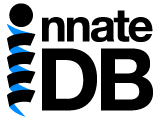| Homo sapiens Protein: ERCC3 | |||||||||||||||||||||||||||||||||||||||||||||||||||||||||||||||
|---|---|---|---|---|---|---|---|---|---|---|---|---|---|---|---|---|---|---|---|---|---|---|---|---|---|---|---|---|---|---|---|---|---|---|---|---|---|---|---|---|---|---|---|---|---|---|---|---|---|---|---|---|---|---|---|---|---|---|---|---|---|---|---|
| Summary | |||||||||||||||||||||||||||||||||||||||||||||||||||||||||||||||
| InnateDB Protein | IDBP-68967.6 | ||||||||||||||||||||||||||||||||||||||||||||||||||||||||||||||
| Last Modified | 2014-10-13 [Report errors or provide feedback] | ||||||||||||||||||||||||||||||||||||||||||||||||||||||||||||||
| Gene Symbol | ERCC3 | ||||||||||||||||||||||||||||||||||||||||||||||||||||||||||||||
| Protein Name | excision repair cross-complementing rodent repair deficiency, complementation group 3 (xeroderma pigmentosum group B complementing) | ||||||||||||||||||||||||||||||||||||||||||||||||||||||||||||||
| Synonyms | BTF2; GTF2H; RAD25; TFIIH; XPB; | ||||||||||||||||||||||||||||||||||||||||||||||||||||||||||||||
| Species | Homo sapiens | ||||||||||||||||||||||||||||||||||||||||||||||||||||||||||||||
| Ensembl Protein | ENSP00000285398 | ||||||||||||||||||||||||||||||||||||||||||||||||||||||||||||||
| InnateDB Gene | IDBG-68963 (ERCC3) | ||||||||||||||||||||||||||||||||||||||||||||||||||||||||||||||
| Protein Structure |

|
||||||||||||||||||||||||||||||||||||||||||||||||||||||||||||||
| UniProt Annotation | |||||||||||||||||||||||||||||||||||||||||||||||||||||||||||||||
| Function | ATP-dependent 3'-5' DNA helicase, component of the core- TFIIH basal transcription factor, involved in nucleotide excision repair (NER) of DNA and, when complexed to CAK, in RNA transcription by RNA polymerase II. Acts by opening DNA either around the RNA transcription start site or the DNA damage. {ECO:0000269PubMed:10024882, ECO:0000269PubMed:8157004}. | ||||||||||||||||||||||||||||||||||||||||||||||||||||||||||||||
| Subcellular Localization | Nucleus. | ||||||||||||||||||||||||||||||||||||||||||||||||||||||||||||||
| Disease Associations | Xeroderma pigmentosum complementation group B (XP-B) [MIM:610651]: An autosomal recessive pigmentary skin disorder characterized by solar hypersensitivity of the skin, high predisposition for developing cancers on areas exposed to sunlight and, in some cases, neurological abnormalities. The skin develops marked freckling and other pigmentation abnormalities. Some XP-B patients present features of Cockayne syndrome, including cachectic dwarfism, pigmentary retinopathy, ataxia, decreased nerve conduction velocities. The phenotype combining xeroderma pigmentosum and Cockayne syndrome traits is referred to as XP-CS complex. {ECO:0000269PubMed:16947863, ECO:0000269PubMed:8304337}. Note=The disease is caused by mutations affecting the gene represented in this entry.Trichothiodystrophy photosensitive (TTDP) [MIM:601675]: TTDP is an autosomal recessive disease characterized by sulfur- deficient brittle hair and nails, ichthyosis, mental retardation, impaired sexual development, abnormal facies and cutaneous photosensitivity correlated with a nucleotide excision repair (NER) defect. Neonates with trichothiodystrophy and ichthyosis are usually born with a collodion membrane. The severity of the ichthyosis after the membrane is shed is variable, ranging from a mild to severe lamellar ichthyotic phenotype. There are no reports of skin cancer associated with TTDP. {ECO:0000269PubMed:9012405}. Note=The disease is caused by mutations affecting the gene represented in this entry. | ||||||||||||||||||||||||||||||||||||||||||||||||||||||||||||||
| Tissue Specificity | |||||||||||||||||||||||||||||||||||||||||||||||||||||||||||||||
| Comments | |||||||||||||||||||||||||||||||||||||||||||||||||||||||||||||||
| Interactions | |||||||||||||||||||||||||||||||||||||||||||||||||||||||||||||||
| Number of Interactions |
This gene and/or its encoded proteins are associated with 73 experimentally validated interaction(s) in this database.
They are also associated with 5 interaction(s) predicted by orthology.
|
||||||||||||||||||||||||||||||||||||||||||||||||||||||||||||||
| Gene Ontology | |||||||||||||||||||||||||||||||||||||||||||||||||||||||||||||||
Molecular Function |
|
||||||||||||||||||||||||||||||||||||||||||||||||||||||||||||||
| Biological Process |
|
||||||||||||||||||||||||||||||||||||||||||||||||||||||||||||||
| Cellular Component |
|
||||||||||||||||||||||||||||||||||||||||||||||||||||||||||||||
| Protein Structure and Domains | |||||||||||||||||||||||||||||||||||||||||||||||||||||||||||||||
| PDB ID | |||||||||||||||||||||||||||||||||||||||||||||||||||||||||||||||
| InterPro |
IPR001161
Helicase Ercc3 IPR001650 Helicase, C-terminal IPR006935 Helicase/UvrB domain IPR014001 Helicase, superfamily 1/2, ATP-binding domain IPR027417 P-loop containing nucleoside triphosphate hydrolase |
||||||||||||||||||||||||||||||||||||||||||||||||||||||||||||||
| PFAM |
PF00271
PF04851 |
||||||||||||||||||||||||||||||||||||||||||||||||||||||||||||||
| PRINTS |
PR00851
|
||||||||||||||||||||||||||||||||||||||||||||||||||||||||||||||
| PIRSF | |||||||||||||||||||||||||||||||||||||||||||||||||||||||||||||||
| SMART |
SM00490
SM00487 |
||||||||||||||||||||||||||||||||||||||||||||||||||||||||||||||
| TIGRFAMs | |||||||||||||||||||||||||||||||||||||||||||||||||||||||||||||||
| Post-translational Modifications | |||||||||||||||||||||||||||||||||||||||||||||||||||||||||||||||
| Modification | |||||||||||||||||||||||||||||||||||||||||||||||||||||||||||||||
| Cross-References | |||||||||||||||||||||||||||||||||||||||||||||||||||||||||||||||
| SwissProt | P19447 | ||||||||||||||||||||||||||||||||||||||||||||||||||||||||||||||
| PhosphoSite | PhosphoSite-P19447 | ||||||||||||||||||||||||||||||||||||||||||||||||||||||||||||||
| TrEMBL | G3V1S1 | ||||||||||||||||||||||||||||||||||||||||||||||||||||||||||||||
| UniProt Splice Variant | |||||||||||||||||||||||||||||||||||||||||||||||||||||||||||||||
| Entrez Gene | 2071 | ||||||||||||||||||||||||||||||||||||||||||||||||||||||||||||||
| UniGene | |||||||||||||||||||||||||||||||||||||||||||||||||||||||||||||||
| RefSeq | NP_000113 | ||||||||||||||||||||||||||||||||||||||||||||||||||||||||||||||
| HUGO | HGNC:3435 | ||||||||||||||||||||||||||||||||||||||||||||||||||||||||||||||
| OMIM | 133510 | ||||||||||||||||||||||||||||||||||||||||||||||||||||||||||||||
| CCDS | CCDS2144 | ||||||||||||||||||||||||||||||||||||||||||||||||||||||||||||||
| HPRD | 00593 | ||||||||||||||||||||||||||||||||||||||||||||||||||||||||||||||
| IMGT | |||||||||||||||||||||||||||||||||||||||||||||||||||||||||||||||
| EMBL | AC110926 AY163769 BC008820 CH471103 M31899 | ||||||||||||||||||||||||||||||||||||||||||||||||||||||||||||||
| GenPept | AAA52396 AAH08820 AAN46739 AAY15069 EAW95312 EAW95313 EAW95314 | ||||||||||||||||||||||||||||||||||||||||||||||||||||||||||||||
